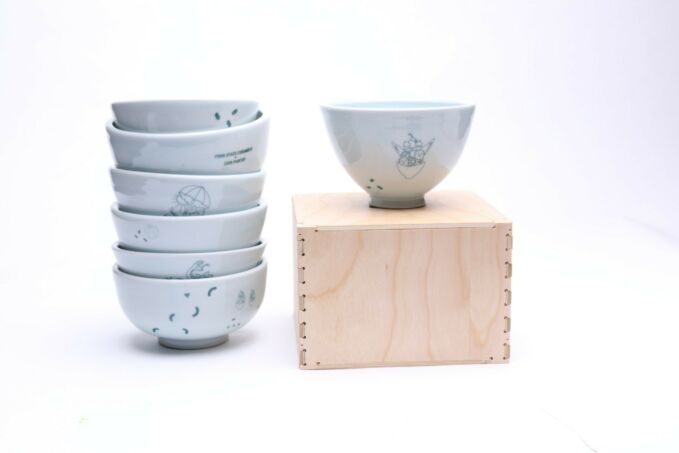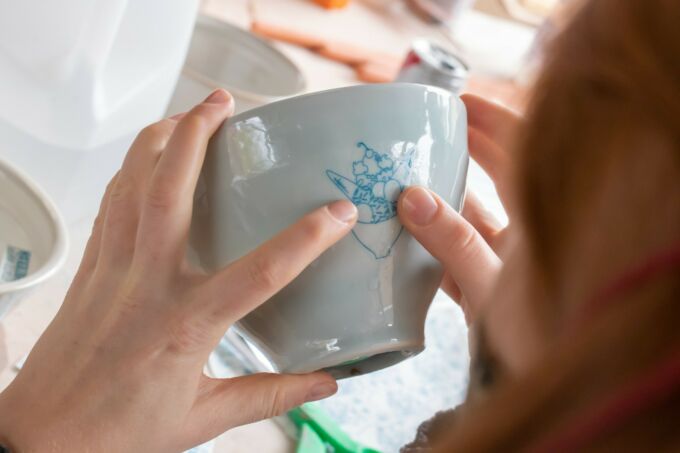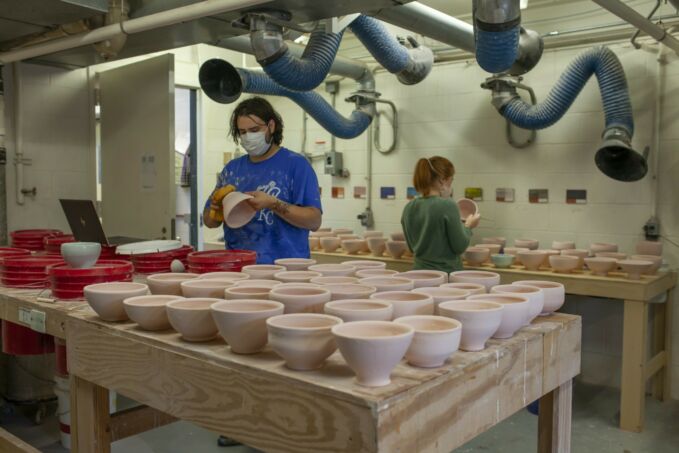December 03, 2020
Penn State Ceramics students get creative to battle food insecurity on campus

Penn State Ceramics students are helping to fill the bowls of students experiencing food insecurity through a social engagement project benefitting The Lion’s Pantry, the University’s student-run food pantry.
Called “Bowled Over,” the project features a limited-edition, student-produced series of bowls available for purchase on the website for the clay c0ven, the student ceramics club.
The project evolved from the pop-up Clay Café in the Borland Project Space, which offered free tea and coffee served in student-made cups and mugs during week-long residencies in 2019 and early 2020.
“This project is one in a long line of student-led community engagement projects addressing issues of sustainability and the role of art in advancing social and ecological justice that the ceramics program at Penn State has initiated,” said Kris Grey, visiting artist and assistant teaching professor in the School of Visual Arts. “Conversations [during the January 2020 Clay Café] around food insecurity and sustainability efforts inspired students and faculty to go deeper with their activism.”
The students originally planned to sell the bowls in person this fall in conjunction with World Food Day on October 16. Production was to take place on campus in summer 2020, but the COVID-19 pandemic and subsequent campus lockdown forced a change in plans.
In spite of a global pandemic, our student artists did what artists everywhere tend to do—showcase resilience and rise up to meet the challenges." -Kris GreyUndergraduate B.F.A. student Anna Graef and 2020 M.F.A. alumnus Andrew Castañeda, now an instructor, transformed a home garage into an offsite ceramic studio and began production for Bowled Over in the summer of 2020. This fall, when students and faculty were able to safely return to campus, the unfired bowls were transferred back to the ceramic studio where they could be glazed, fired and finished. Graef said working on the Bowled Over team has provided her with a sense of relief and purpose during a challenging time. “Throwing bowls for this community engagement project gave Andrew and me reason to set up our own makeshift garage studio space, and reason to return to clay for a cause,” noted Graef. “The repetition of throwing so many similar, though not identical, bowls was an interesting parallel to the repetitive general monotony of quarantine life. Knowing that the bowls were destined to help our community, though, helped to make our bowl production feel more meditative and productive than monotonous or taxing.” Second-year graduate student Audrey An designed a series of interchangeable decals based on drawings and images produced by ceramic students. First-year graduate student Harrison Boden helped glaze and apply decals to the surface of the bowls, and second-year grad student Austin Bradshaw designed and milled custom wood boxes to house each of the unique pieces. According to Shannon Goff, associate professor of art and co-director, with Grey, of Bowled Over, the project has been akin to an antidote for the coronavirus. “It has been a joy to witness how the process has emboldened and bonded the students. We foresee Bowled Over growing and changing based on students’ interest in cross-collaboration across the University and local area,” said Goff. “We look forward to in-person events and scaling the project up to create even more community connectivity, engagement and an even greater contribution to ending food insecurity in the region, all while making art accessible.” Individuals interested in supporting Bowled Over can purchase a bowl for $100, or make a donation, at https://clayc0ven.com/bowledover. The project is supported by the Arts & Design Research Incubator, and also benefits, in part, clay c0ven.



